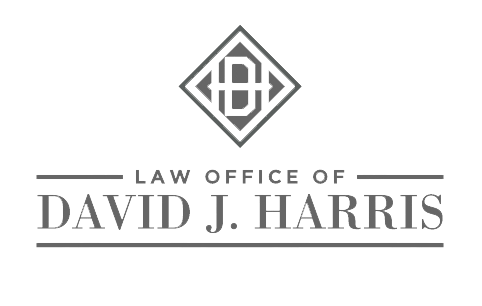The Mortgage Foreclosure Process in Luzerne County and Northeastern Pennsylvania
In Luzerne County and other parts of Pennsylvania, including neighboring Lackawanna, Columbia, Monroe, Wayne and Pike Counties, banks will not take formal mortgage foreclosure action against a homeowner until he or she is several months behind with his or her mortgage payments.
If the homeowner fails to respond to the bank’s initial informal notice, the bank will issue Act 6 and Act 91 letters as required by Pennsylvania law, to notify the homeowner of: (A) his or her right to bring the mortgage arrearage current within 30 days to avoid attorney’s fees and costs; and (B) the availability of assistance from the Pennsylvania Housing Finance Authority.
If the arrearage is not then cured or Act 91 assistance is not applied for within the 30-day period, or the Act 91 application is rejected, the bank will file and serve a mortgage foreclosure complaint upon the homeowner.
The homeowner will then have 20 days to answer the complaint to raise any defenses he or she may have.
If the complaint is not answered, the bank will issue another ten day notice of its intention to file a judgment.
If the complaint is then not answered, a judgment is entered. If the complaint is answered, a hearing or trial on the issues raised will be held several months later.
If the complaint is not answered or the homeowner is not successful at the hearing or trial, a judgment in mortgage foreclosure will be entered of record, after which the bank will file a series of documents with the court to notify other mortgage or judgment holders of its judgment and to set a sheriff’s sale date for the auction of the homeowner’s property.
The homeowner must get at least 30 days advanced notice of the actual date for the sheriff’s sale.
As a practical matter, it takes at least 6 months or more from the date that the homeowner stops paying his or her mortgage until the date of the sheriff’s sale in Luzerne County.
In my next post, I will describe how a sheriff’s sale is conducted in Luzerne County and its neighboring counties. Until then, please feel free to call me at (570) 823-9400 or send an e-mail at dh@lawofficeofdavidharris.com with any questions regarding the mortgage foreclosure process in Luzerne County and neighboring Lackawanna, Columbia, Monroe, Wayne and Pike Counties and whether a Chapter 13 bankruptcy filing may be a solution to resolving your foreclosure problem.
Judgments, Liens, Levies and Bankruptcy In Pennsylvania
When a dispute arises, an aggrieved person or business can sue another in court and, if the aggrieved party is victorious, the court will issue a judgment in the aggrieved party’s favor. The court will also issue a judgment in the aggrieved party’s favor if the party being sued fails to timely file an answer to the aggrieved party’s complaint.
Under Pennsylvania law, a judgment will act as a lien or charge on all real estate owned by the losing party in the county where the judgment is recorded with the county clerk of court (known as the Prothonotary in most counties in Pennsylvania, including Luzerne County, Lackawanna County, Columbia County, Wyoming County and Monroe County).
Under Pennsylvania law, a judgment does not act as a lien or charge on the losing party’s non-real estate assets, such as a bank account, furniture and other household goods or business equipment, until the winning party directs a sheriff to levy on those assets. The sheriff accomplishes this by going to the losing party’s residence or business and taking an inventory of the assets.
The party, in whose favor the judgment is awarded, can either:
(A) Execute on the judgment by seeking to force the sale of the losing party’s assets through a court order, paying off any prior or senior liens (i.e., mortgages or judgments that were recorded first) and then keeping the sales proceeds that remain; or
(B) Simply sit tight until the losing party is ready to sell the assets, in which case, the winning party will have to be paid in order for the sale to go through.
In summary, a judgment is a public declaration by a court that one party has a claim against another. The judgment can become a lien on the losing party’s assets to secure the claim of the winning party. In other words, it becomes a secured debt.
A bankruptcy filing can often void a judgment or the effect of the lien that it creates. Depending on a host of factors that will be discussed in later posts, the most common situations where this can be accomplished is where: (A) the judgment impairs an exemption afforded to the bankruptcy debtor under the Bankruptcy Code; (B) the judgment was recorded against one spouse and all of the debtor’s assets are jointly held with his or her spouse; (C) the judgment was entered within 90 days of the bankruptcy filing; or (D) the value of the assets are already fully encumbered by prior (or earlier recorded) liens.
If you have been sued and a judgment has been, or is about to be, entered against you or levy action has been, or is about to be, taken against you, please feel free to call me to discuss your options. I can be reached at (570) 823-9400 or at my e-mail address at dh@lawofficeofdavidharris.com.
New HAMP Protections for Borrowers and Bankruptcy Debtors
On March 24, 2010, the United States Treasury released the “New HAMP Borrower Outreach and Communication Guidelines.”
These guidelines contain new protections for borrowers facing foreclosure, as well as protections for bankruptcy debtors. No longer will HAMP servicers and lenders be able to discriminate against bankruptcy debtors. Now servicers and lenders will be permitted to accept bankruptcy schedules in lieu of the extensive documentation required for non-bankruptcy debtors.
The new rules became effective on June 1, 2010.
On March 26, 2010, Treasury also released rules that are helpful to financially distressed borrowers, including bankruptcy debtors that:
1. provide a 3-6 month mortgage payment forebearance for unemployed borrowers;
2. provide for FHA refinancing to reduce total mortgage principal;
3. provide for voluntary principal reductions; and
4. provide certain debtors with nominal short-sale and relocation assistance.
If you reside in Wilkes-Barre, Luzerne, Lackawanna or Monroe Counties or anywhere in Northeastern and Central Pennsylvania and are facing a mortgage foreclosure or you have filed for bankruptcy and need to modify your mortgage, please feel free to call me or have your attorney call me to discuss these rules or write to me at dh@lawofficeofdavidharris.com.
IRS Eases Guidlelines To Qualify For Offers In Compromise
On May 21, 2012, the IRS announced new guidelines that will increase the number of taxpayers who will be able to qualify for an Offer in Compromise. (IR-2012-53.)
The announcement reflects a “Fresh Start” initiative of the IRS to help struggling taxpayers.
In general, an Offer in Compromise is an agreement between a taxpayer and the IRS that settles the taxpayer’s tax liabilities for less than the full amount that he or she owes.
The amount of an Offer in Compromise has always been determined by the reasonable collection potential of the taxpayer: Adding the taxpayer’s “future income” to the “realizable value” of his or her assets (i.e., liquidation value of equity in assets).
“Future income” is an estimate of a taxpayer’s ability to pay based on an analysis of his or her “monthly available income” measured over a specific number of months into the future.
In the past, a taxpayer who could pay the Offer amount in five monthly installments was required to multiply his “monthly available income” by 48 months to arrive at “future income.” A taxpayer who wanted to pay the Offer in 24 monthly installments was required to multiply his “monthly available income” by 60 months to arrive at his future income.
Now, under the revised guidelines, “future income” is determined by multiplying the “monthly available income” by 12, if the Offer can be paid in 5 monthly payments or less or, by 24, if the taxpayer needs 24 months to pay the Offer amount in full.
One huge change to the guidelines is that the IRS now allows a deduction in determining “monthly available income,” for payments for: (A) loans guaranteed by the federal government for the taxpayer’s post-high school education; and (B) delinquent state and local taxes based on a percentage basis of tax owed to the state and IRS.
These deductions are available in the calculation if the taxpayer verifies that the loan is guaranteed and substantiates that the state and local tax payments are being made.
Taxpayers with student loan debt, but who have not yet made arrangements to repay the loan, will be allowed 10 days to set up a payment plan for the student loan and provide verification to the IRS. If there are extenuating circumstances, additional time may be allowed.
You should note, however, that an Offer in Compromise will not be accepted if the IRS believes that the liability can be paid in full through an installment payment agreement or in a lump sum, unless unique circumstances exist (e.g., illness or some other severe hardship).
Nevertheless, if a taxpayer does not qualify for an Offer in Compromise, a taxpayer may consider an installment payment arrangement to avoid IRS collection action.
The IRS’s new “Fresh Start” initiative affords streamlined installment agreements for more taxpayers. In the past, the IRS generally was required to enter into installment agreements requested by individuals whose aggregate tax liability did not exceed $10,000, if the IRS determined that the taxpayer was financially unable to pay the tax liability in full within two years. Now, the IRS allows taxpayers who owe up to $50,000 in back taxes to enter into streamlined agreements that stretch out the payments over a series of months or years. The IRS also increased the maximum term for streamlined installment agreements to 72 months from the previous 60-month maximum.
If you have any questions, please call me at (570) 823-9400 or send an e-mail to me at dh@lawofficeofdavidharris.com.





